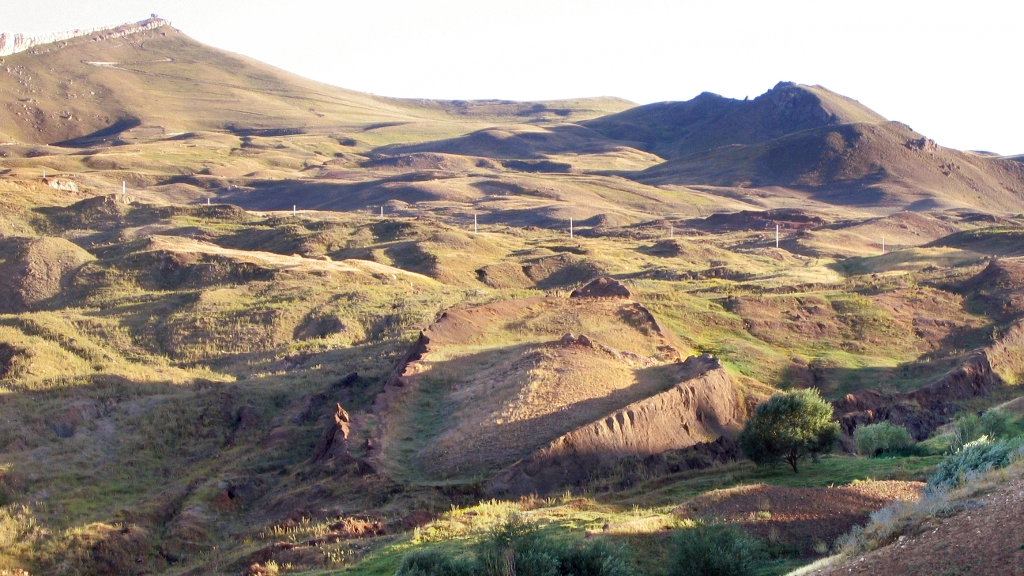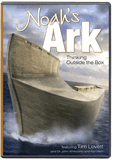Questioning the Ark's Ability to Float
Reuters: “How Did Noah’s Ark Float? New Species Cram Aboard” Noah’s Ark must be a myth, say some, because it surely couldn’t have complied with “modern marine transport guidelines.”
A Reuters article asks the “tough” question, “How did Noah's Ark manage to stay afloat?” amid a surging number of species—described irreverently as “hull-busting millions”—scientists record worldwide. From the writing, it would appear the article’s author, Reuters environment correspondent Alister Doyle, shares the same view as the quoted James Edwards, executive director of a species-cataloging project.
Though we wonder if Edwards is even familiar with, let alone has read, classic examinations of the Ark.
“It’s of course physically impossible,” Edwards said of the Ark’s feasibility, though we wonder if Edwards is even familiar with, let alone has read, classic examinations of the Ark such as John Woodmorappe’s Noah’s Ark: A Feasibility Study and Tim Lovett’s Noah’s Ark: Thinking Outside the Box.
Doyle reports that Edwards and others estimate there are up to 100 million species at present, ignoring extinct species, suggesting it was enough to overwhelm even the “giant ship” (Doyle’s words) the Bible describes.
However, Doyle also interviewed AiG’s own Dr. David Menton, who pointed out several facts that mitigate the supposed impossibility of the Ark account:
- Noah took only land creatures and birds, not plants or aquatic creatures.
- Organisms known to survive extensive flooding, such as insects and worms, would not have been on the Ark, which excludes many more known species.
- Noah would have taken representative kinds of animals on the Ark—e.g., perhaps two from the canine kind instead of separate dogs, wolves, coyotes, and dingos.
- Noah may have brought juveniles, such as baby sauropods, to save space.
Dragos Rauta, an expert with the International Association of Independent Tanker Owners, said the capacity of the Ark, based on the Bible’s account, could have been an “impressive” 30,000 tons. Doyle reports that the Ark would have had floor space of 10,000 square meters, based on a three-deck Ark.
“Even so, the vessel would struggle to comply with modern marine transport guidelines, even with a few thousand creatures,” Doyle writes, though his justifications fall flat. He quotes livestock shipping expert Bjorn Clausen, who comments that “large cows need at least 2 square met[er]s each when held in pens for half a dozen animals,” then hurls the elephants in—and tigers, kangaroos, and rhinoceroses. “[T]he Ark would have quickly filled up,” he concludes.
We don’t know if God intervened in any way to alter the animals’ behavior to make them more placid, instigate hibernation, etc.
Thus, a pair of large adult cattle (which are obviously larger than the average animal size) would take up less than half a percent of the Ark’s floor space (though this ignores food storage, Ark sub- and superstructure, and the possibility that there were likely more than two cattle on the Ark since, according to later Scriptural passages (Deuteronomy 14), they were considered clean—see Genesis 7:2). Of course, calves would occupy less space. Even including two rhinoceroses (again, possibly juvenile), two elephants, two hippopotamuses, two sauropods, and so forth, there would remain thousands and thousands of square meters for the rest of the animals. Furthermore, even with only three decks, Noah could have stacked cages and enclosures, especially for birds and other small animals; for example, it is conceivable that the kinds corresponding to modern-day rodents (which constitute a significant proportion of all mammals), could have been contained in a few rooms full of stacked enclosures.
The key to understanding the feasibility of the Ark is to accurately appraise the Ark’s capacity and realistically determine the size and number of animals and food it needed to stow. We also need to keep in mind that God would presumably not have told Noah to build an Ark far bigger than what was necessary, and that it probably did take some “out of the box” thinking to fill the Ark efficiently, keep animals in parts of the Ark that sustained their ideal temperature ranges, deal with feeding and waste management, and so forth. Furthermore, we don’t know if God intervened in any way to alter the animals’ behavior to make them more placid, instigate hibernation, etc., and the Bible doesn’t exclude this possibility.
This brings us back to the important thing to remember when analyzing the Ark account: feasibility studies can help us understand just how Noah filled the Ark, but ultimately, the Bible says that it happened, and we trust God’s Word—not the speculations of Christians or non-Christians—as the ultimate authority. The Bible clearly upholds the Ark account, as does Christ in Luke 17:26–27. Therefore we assume the account is true, even before giving consideration to just how the feat was accomplished—or whether the Ark complied with modern marine transport guidelines! Yet a reasonable and thorough examination of the matter reveals that the Scripture indeed can be trusted. No surprises there.
For more information:
Remember, if you see a news story that might merit some attention, let us know about it! (Note: if the story originates from the Associated Press, Fox News, MSNBC, the New York Times, or another major national media outlet, we will most likely have already heard about it.) And thanks to all of our readers who have submitted great news tips to us.
(Please note that links will take you directly to the source. Answers in Genesis is not responsible for content on the websites to which we refer. For more information, please see our Privacy Policy.)
Recommended Resources

Answers in Genesis is an apologetics ministry, dedicated to helping Christians defend their faith and proclaim the good news of Jesus Christ.
- Customer Service 800.778.3390
- Available Monday–Friday | 9 AM–5 PM ET
- © 2025 Answers in Genesis






